Ambiguous "Tomahawk"
Among the fighters of the Second World War, the Curtiss P-40 aircraft occupies a special place. This car began its journey in the 1937 year with the XP-37 prototype, then went through a huge number of upgrades and earned a reputation as a workhorse for the pilots of the anti-Hitler coalition countries who fought on it until the end of the war. However, despite such a long combat life, the P-40 never shone with its real combat capabilities.
Pilots and aviation experts noted that this aircraft was not high-speed, it was characterized by low maneuverability, had low climb rates and, on the whole, looked outdated by modern fighters with an obsolete aircraft. P-40 is almost always mentioned among the most unsuccessful combat vehicles of the Second World War. All these opinions, of course, were justified, but it was also true that the P-40 honestly served its country in the initial period of the Pacific War, when it was difficult to replace it with anything. P-40s allowed the Americans to gain time in anticipation of the arrival of more modern types of fighter aircraft. In the hands of experienced pilots who are well aware of its strengths and weaknesses, the P-40 could be effectively used in air battles. Moreover, this aircraft remained in serial production for a long time after launching a series of more modern fighters replacing it - it became the third most advanced American fighter in World War II after the R-47 R-51 and North-American R-XNUMX.
By the standards of the European theater of war, the P-40 was outdated at the time of its first flight, and this situation was not corrected in the future. Such shortcomings of the fighter, such as weak weapons, lack of tank protection and booking, reflected typical for the thirties, the requirements of the US Army Air Corps to fighters. The P-40 was a product of the concept of a non-high-flying fighter that appeared at that time, direct support for troops. This concept, in turn, was the result of the idea of "the dominance of bomber aircraft over fighter". In the US, they did not expect high-altitude bombers to raid, and the main task for the fighters was to consider coastal defenses and the direct cover of their ground forces on the battlefield. Therefore, the accusations against Curtiss are not entirely justified, the military received the car they ordered.
However, its shortcomings became the subject of consideration by a special commission of the US Congress. At one time, the Senate Special Commission to review national defense programs (commonly known as the "Truman Committee", which headed it) particularly criticized the large volume of production orders for the P-40, which clearly did not meet the requirements for a modern fighter, as well as after launching a series of more modern aircraft. True, the commission acknowledged that no “special” lobbying by Curtiss of its plane among the officials was revealed.
But back to the beginning. History P-40 fighter began in 1937 year, with the study of the possibility of installing on the Curtiss aircraft P-36 ("model 75"), which had a radial engine, a new liquid-cooled motor. The immediate predecessor of the P-40 was the XP-37. Glider P-36 was redesigned for the Allison V-1710 liquid-cooled engine, which resulted in a new aircraft. XP-37 received a General-Electric turbocharger and a cockpit shifted to the very tail.
The 13 YР-37 of the installation series was sourced, but because of problems with the turbocharger, the work on the Р-37 was stopped - they chose a simpler installation option for the Allison V-1710 engine, directly on the P-36 glider.
Given that the P-36A fighter with an air-cooled engine had virtually no reserves for development, designer Curtissa Donovan Berlin, in the summer of 1937, offered the Army Air Corps to install a mechanical supercharger. This project received the internal designation "model 36Р", and the army assigned it the designation XP-1710.
For the first time, the XP-40 took to the air, running Edward Elliot, 14 October 1938. The armament of the new machine consisted of a pair of 12,7-mm synchronous machine guns - standard, for American fighters of those days. Under the wing was possible suspension of six 9-kg bombs. Under the nose of the fuselage placed a small oil cooler. The air intake of a single-stage supercharger was located above the hood between the barrels of machine guns. On serial aircraft it was replaced by an elongated channel along most of the bonnet, which became a characteristic feature of the first fighter models. Initially, the radiator of the engine cooling system was located under the fuselage behind the wing, but then it was gradually moved forward until it was under the engine. Thus, two ethylene glycol and oily radiators were concentrated in the nose.
With take-off weight in 2848 kg, the XP-40 developed a maximum speed of 3720 m to 547 km / h. This was higher than that of Hurricane, but less than that of Spitfire and Bf-109. The weight of the empty aircraft was 2464 kg, the maximum take-off - 3125 kg. With a supply of fuel in 455 l at a speed of 478 km / h, the aircraft flew 736 km, and with a supply of fuel in 723 l, the maximum range was 1880 km - twice as much as Hurricane, Spitfire and Bf-109Е.
At the end of 1938, the US Army Air Corps planned to drastically increase its combat potential, and on January 25, the main aircraft manufacturers were asked to present their new fighter aircraft projects. The army still saw the fighter with a non-high-flying aircraft, with a short range. Among the contenders for the serial order were the projects Lockheed XP-1939, Bell XP-38, Seversky / Ripablik AR-39 and AP-2, and at least three Curtiss projects - H-4Р, ХР-75 and ХР-37. Although the XP-42 was inferior in height characteristics to fighters with a turbocharger, it was cheaper and could be quickly launched into mass production. In addition, the XP-40 was based on a glider from a proven machine that was already being mass-produced.
As a result, the 26 of April 1939, the army, did not resist the views of conservatives, ordered the 524 serial Curtiss fighters, designated P-40 (brand name "model 81"). By then, it was the largest fighter order in the United States. At the same time, the installation batches of the YP-38 and YP-39 fighters were ordered, and two weeks later the 13 of the YP-43 fighters were ordered.
The P-40 differed from the XP-40 only in the V-1710-33 (With 15) hp 1040 engine. and installing another pair of wing 7,62-mm machine guns. This fighter had a fairly clean, for that time, aerodynamic shape and even retractable tail wheel.
The supply of the P-40 army began in June 1940. The first three serial fighter P-40 used for military trials, as the usual installation party - the Y-series - the contract was not provided. At the same time, foreign buyers also showed interest in the aircraft. In May 1940, the French Air Force ordered the 140 fighter H-81 - export model P-40.
Only 200 aircraft from the first order for Curtiss fighters were completed in the P-40 version. The order for the remaining 324 aircraft was postponed to allow Curtiss to fulfill the contract for the supply of France's 140 H-81A. In general, they were identical to the P-40, with the exception of the French calibration of instruments and engine control knobs in the "French" manner. The first export aircraft was flown around 6 June 1940 g, but before the defeat of France, not a single H-81A got there. The British agreed to accept the French order, giving the fighter the designation "Tomahawk-I". (In the Soviet Union, it was called "Tomahawk," and often the word was simply translated as "Tomahawk.")
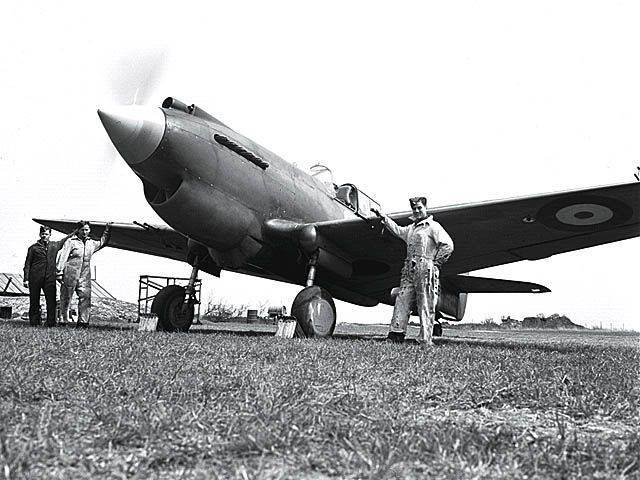
The US Air Force Command agreed to delay acceptance of the P-40 in order to deliver the Tomahokas to the British as quickly as possible. The first fighter arrived in the UK in September 1940 of the year. It retained 12,7-mm synchronous machine guns, only the Browning 7,5-mm machine guns Browning ordered by the French were replaced with Browning 7,7-machine guns. The urge to get new fighters was such that many of the 140 The fighters arrived with French instruments and technical markings.
However, the British quickly concluded that the aircraft was not suitable for combat work, since it lacked the pilot’s armored protection and tank protection. However, since the German invasions were expected from day to day, "Tomahawk-I" were distributed among the combat squadrons. The German invasion of the British Isles did not take place, and Tomahawk-I began to be used mainly for the training of pilots. Three fighters were sold to Canada, where they were used as visual aids. And 16 "Tomahawk-I" after the invasion of Germany in the Soviet Union were sent to the Red Army Air Force.
At the same time, in North Africa, on Tomahawk, the 112 Squadron, which replaced its clearly outdated Gloucester Gladiator biplanes, was re-armed. A distinctive feature of the Tomahawks of the 112 Squadron was the "smile of a shark" painted on the hood - later also used by American volunteers in China. During the fighting over the desert, another Tomahawk flaw was revealed. Motor "Allison" was very afraid of dust. The dust was worse than the rare Italian and German fighters. Of the available flight machines, usually no more than one third were suitable.
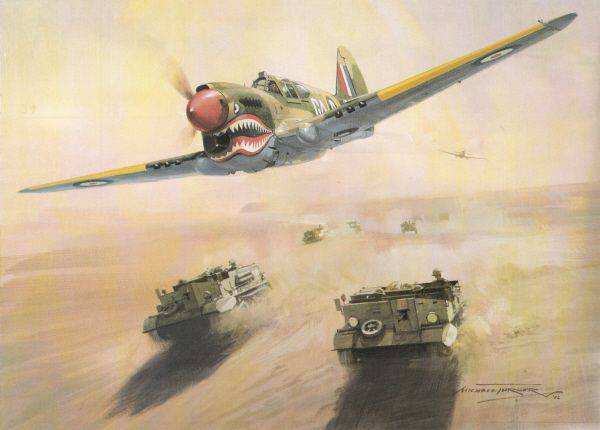
It is worth noting that the fighter P-40 became the most popular aircraft of the Curtiss company during the Second World War. To estimate at what pace the production of P-40 was carried out, it suffices to refer to the growth of space and the number of people employed at Curtiss. During 1941, this company increased its production space four times. And the number of people employed in production reached 45000 people. To this end, two new factories were built in Buffalo, New York, and in Kolubus, Ohio headquarters, which added to the firm’s headquarters in St. Louis, Missouri. On the rise of military production, the entire Curtiss Airplane Division produced 60 airplanes daily.
Another modification of the fighter was the P-40В. (The designation of the P-40A was initially omitted, but later it was used for the P-40 aircraft No.40-326, converted in March of the 1942 of the year to Bolling Field as a photo reconnaissance.) mm machine guns in the planes of the wing. The engine remained V-40-40. In September 7,62, the X-NUMX fighter, P-1710, was ordered by the army as part of a deferred contract for the remaining fighters. The first P-33B was circled around 1940 in March 131. The weight of the empty fighter of the new modification was 40 kg, take-off - 40 kg, maximum - 13 kg. Due to the higher take-off weight, the characteristics slightly decreased: the maximum speed was 1941 km / h, the climb rate was 2543 m / s, the practical ceiling was 3333 m. The normal flight range was 3458 km
The Tomahawk-IIA model was equivalent to the American P-40B. The plane received armor, and the tanks were outside covered with a protector. They were armed with two 12,7-mm synchronous and two 7,7-mm wing machine guns. It was put the English radio station.
As part of the original P-40 contract, X-NUMX P-193C were also released. The first flight of the P-40 took place on 40 on April 10. This modification also retained the Allison V-1941-1710 engine, but the fuel system was changed - the fuel supply was brought to 33 l, the tanks were also improved, and a new radio station was installed. These improvements again led to a further increase in the weight of the aircraft and, accordingly, to a decrease in flight performance. The maximum speed fell already to 607 km / h at the height of 552 m, and the climb rate to 4575m / s.
Tomahawk-IIB was generally analogous to the American P-40C. Four 7,7-mm Browning machine guns were placed in the wing. A total of four series was released 930 machines of this model. 100 of them were sent to China. Tomahawk-IIB was used by the Royal Air Force and South African Air Force in North Africa, starting with 16 June 1941.
After the Germans attacked the Soviet Union in June 1941 of the year, the Tomahawk-IIB 195 was sent to the USSR. Some directly from the United States, others from the Royal Air Force reserve, since it was no longer necessary to expect a German landing on the British Isles. These Tomahawks have been used in battles near Moscow and Leningrad since October 1941. It was the P-40 that became the first American aircraft to join the battle on the Eastern Front.
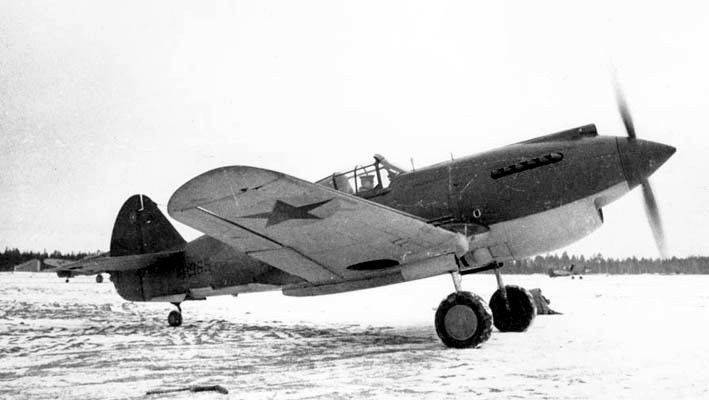
In November, several P-1941s were sold to the Turks in order to maintain their neutrality - the Turks then took combat aircraft from allies and from the Axis countries.
Tomahawk II has been actively used by the British in North Africa since October 1941. These fighters were mainly engaged in the storming of the retreating German and Italian units. The ability of Tomahawk to withstand heavy damage from enemy fire was extremely high.
At low altitudes, "Tomahawk" had some superiority over Messerschmitt Bf-109, but this advantage quickly melted with a climb of more than 4500 m. Although the plane was generally inferior to "Messerschmitt", in the hands of experienced pilots it was a formidable fighter. For example, the wing commander Clive Caldville won the battles at Tomahawk over 20 victories. Still, it is worth noting that at the beginning of the war, “Tomahawks” had to meet more often with outdated Fiat GR-42 biplanes or with transitional type Fiat G-50 monoplanes from the Italian Air Force. Much more difficult P-40 accounted for in battles with Mackey C-202 fighter "Folgore."
100 "British" "Tomahawk-IIB" were transferred to China, where they entered into service with a group of American volunteers - the famous "Flying Tigers". It is to the Flying Tigers that the P-40 owes much of its glory. Back in November 1940 of the year, the newly appointed brigadier general of the Chinese Army, Claire Chenolt, went to the United States to recruit volunteer pilots. A group of American volunteers was officially created in August 1941. At the same time, General Chennah ordered the P-100 fighter jets from the US government. By the time of the attack on Pearl Harbor, around 40, American volunteer pilots were in China at bases in Kunming and Mingaladon. Despite popular belief, American volunteers went into battle after Pearl Harbor. As already mentioned, the famous "smile of a shark", painted on the hood of their cars, repeated the coloring "Tomahok" 80-th squadron of the Royal Air Force.
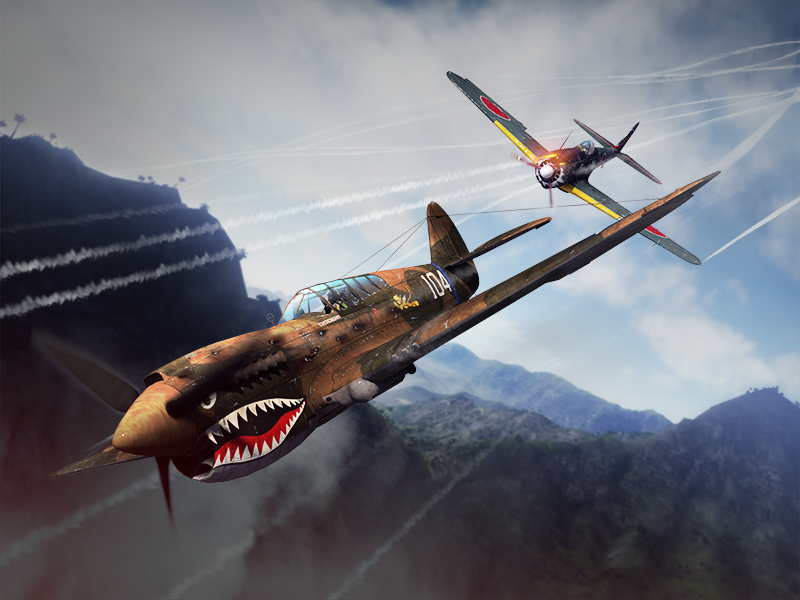
The first flying sortie "Flying Tigers" made on December 20, knocking down six of the ten Japanese intercepted bombers. When the Tigers confronted the Japanese Zero, the American volunteers at first underestimated the maneuverability of the Japanese aircraft and eventually lost two pilots. It soon became clear that with a Japanese plane you should not be agile in maneuverability and climb, but you should use the best speed and diving qualities of the P-40. The most effective tactic against the "Zero" was a dive and a quick exit from the battlefield. At the same time, the P-40 gained a reputation as a durable, survivable aircraft, which allowed many pilots to return home after receiving serious combat damage.
In May, the new model, P-1941D, arrived on the Curtissa assembly lines. Its main difference was the use of the new Allison V-40-1710 engine, the 39 hp power. This engine was originally intended for an experienced XP-1150 fighter, but the US Army Air Corps decided not to stop the production of the P-46, but to modify the production aircraft. The proposal to refine the P-40 on the model of the P-40 received 46 June 10 of the year, and Curtiss agreed to use the new motor. The project received the official designation P-1940D. Since the P-40D was seriously different from the previous P-40 models, on Curtiss it wore a new designation “40 model”.
Even before the release of the first P-40D, the British in May 1940 r ordered 560 aircraft of this model. Changes in the airframe and engine led to a change of name - now the aircraft was dubbed "Kittihok" -1. But about him and the application of P-40 in the Soviet Union in the next article.
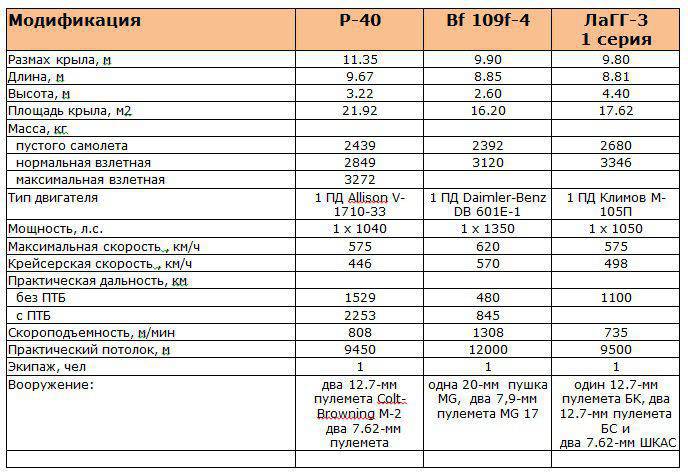
To be continued.
Sources:
Kotelnikov V. Leiko O. Fighter Р-40 // Digest "Wings". No.2. C. 2-9.
Kotlobovsky A. "Donkey Hawks" of Berlin // Aviation and Time. 2000. No.3. C. 35-39.
Firsov A. US Fighters // Aviation Collection. No.14. C. 1-4.
Ivanov S. Curtiss P-40 // War in the air. No.52. C.1-17, 43-50.
Donald D. US military aircraft of World War II. M: AST, Astrel, 2002. C. 67-71.
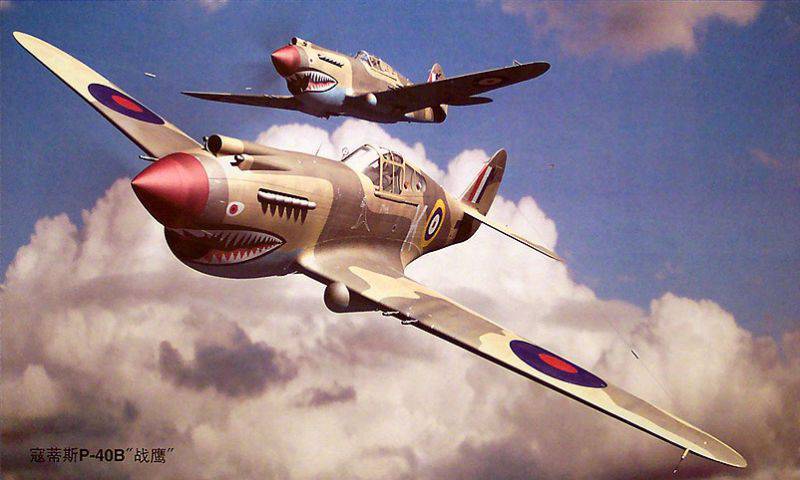
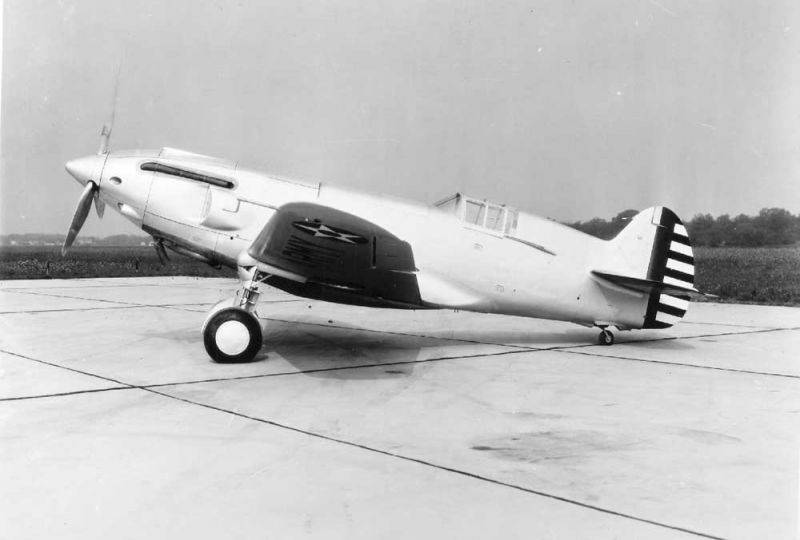
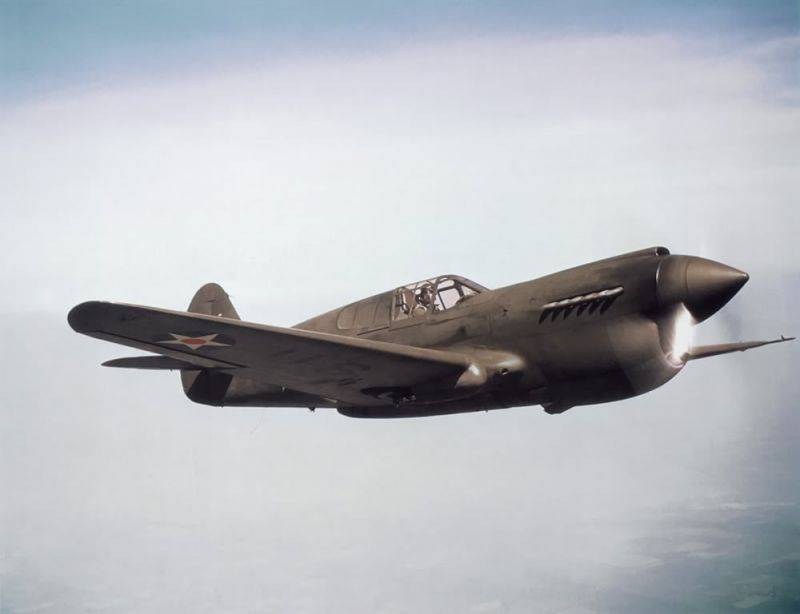
Information